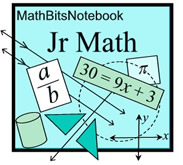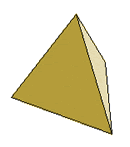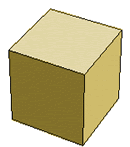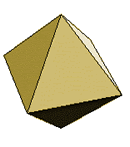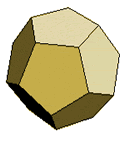Under the section "Area, Perimeter, Volume", we worked with polygons and polyhedra. Polygon is a universal designation for 2-dimensional figures with line segments as their sides (such as triangles, rectangles, pentagons, etc.). The three-dimensional figures with polygon faces are categorized as polyhedra.
There are a total of five such regular polyhedra called the Platonic Solids, The Platonic Solids
While there is no limit to the number of regular two-dimensional polygons,
Topical Outline | JrMath Outline | MathBitsNotebook.com | MathBits' Teacher Resources
|
